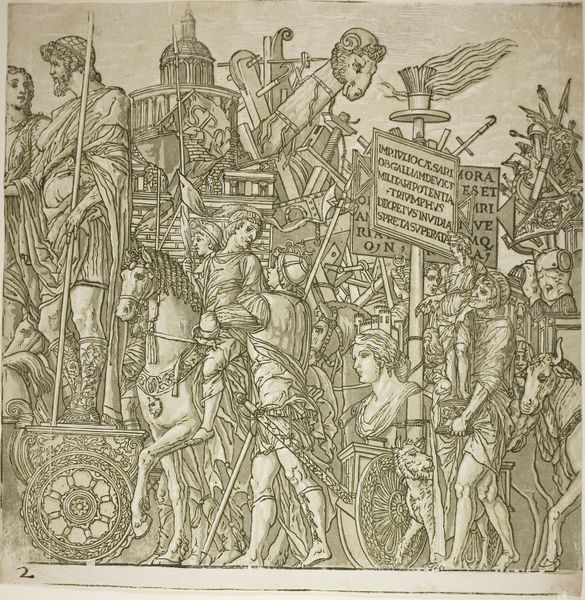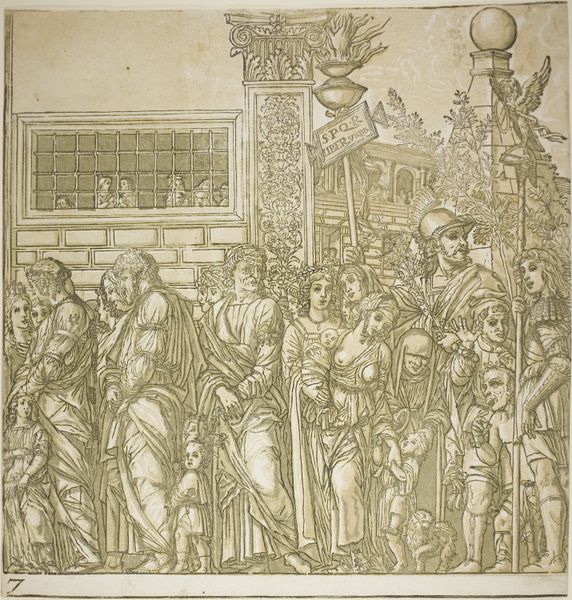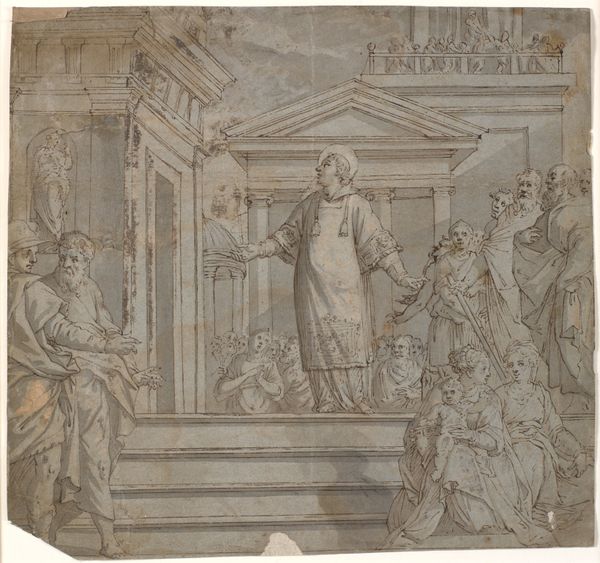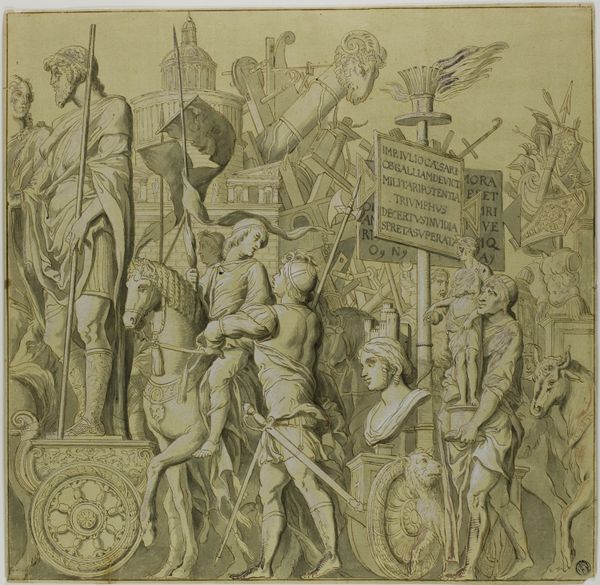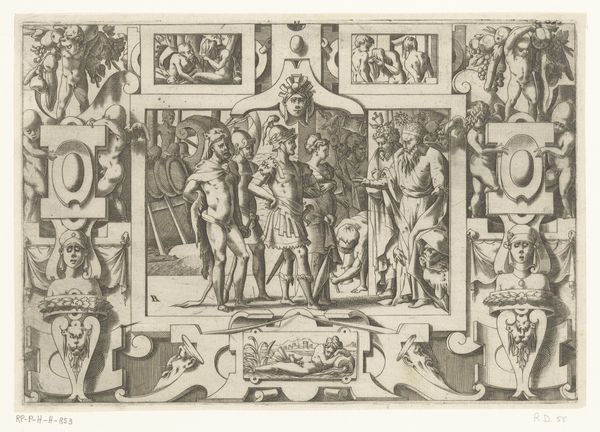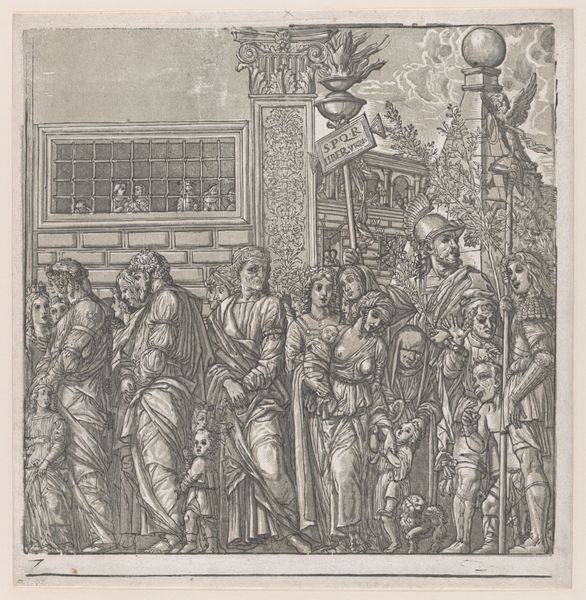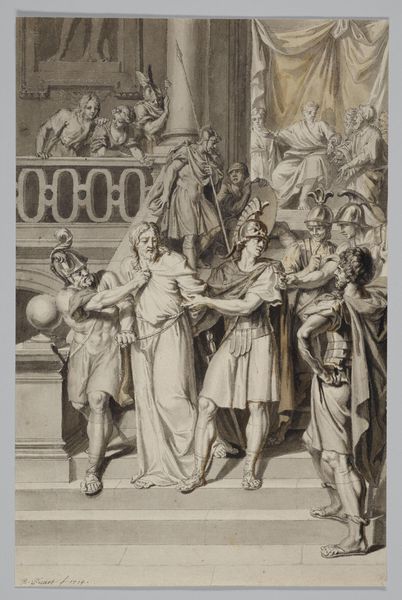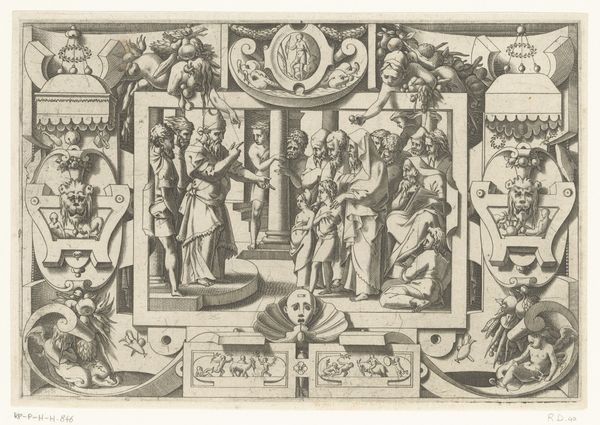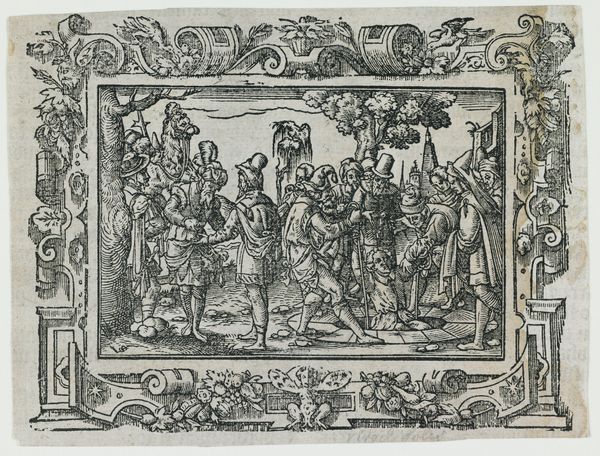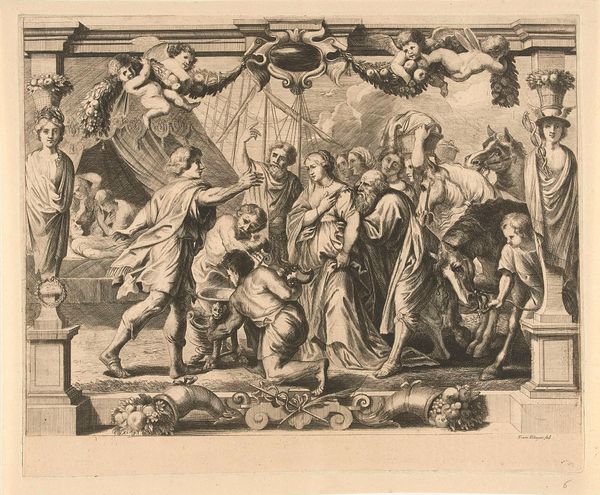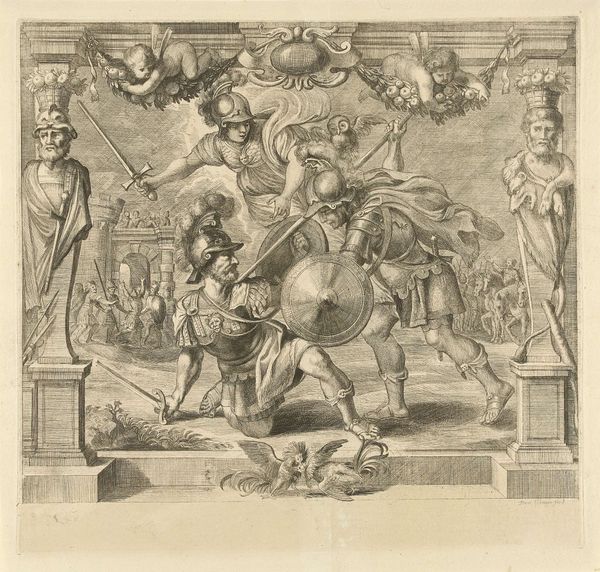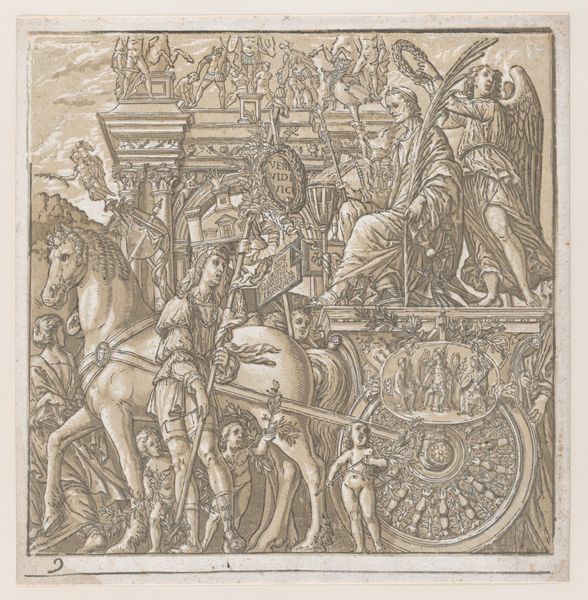
Triumphs of Julius Caesar: Canvas No. VII c. 18th century
0:00
0:00
drawing, print, paper, ink, pen, charcoal
#
portrait
#
drawing
#
allegory
#
narrative-art
# print
#
charcoal drawing
#
figuration
#
paper
#
oil painting
#
ink
#
ancient-mediterranean
#
men
#
water
#
pen
#
watercolour illustration
#
charcoal
#
history-painting
#
academic-art
Dimensions: 370 × 372 mm
Copyright: Public Domain
Andrea Mantegna created this canvas in the 15th century, using traditional drawing materials - ink and brush on canvas. The scene depicts a triumphal procession, seemingly referencing Roman antiquity. But it's the method of production that I find most striking. Notice how Mantegna meticulously built up form using delicate cross-hatching. This wasn't just a quick sketch; it was a labor-intensive process. Mantegna was celebrated in his time as a master of perspective and illusionism. He used these skills to create an image with a palpable sense of depth and volume. The figures almost seem to leap off the canvas, much like a sculpture. In its time, art production relied on the skilled hands of artisans. Mantegna's drawing represents a significant investment of time and labor, challenging any simplistic separation between art and craft.
Comments
No comments
Be the first to comment and join the conversation on the ultimate creative platform.
